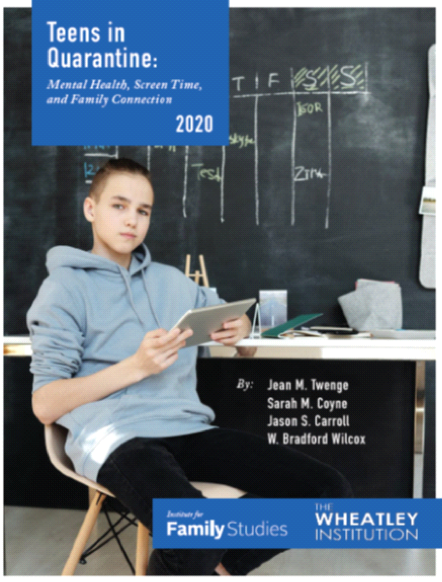Depression and loneliness were actually lower among teens in 2020 than in 2018.

Teens in Quarantine Report: Download
In March 2020, life changed very suddenly for Americans. As the COVID-19 pandemic took hold, work and school moved online, restaurants closed, and unemployment soared. The effects on mental health were immediate: U.S. adults in spring 2020 were three times more likely to experience mental distress, anxiety, or depression than adults in 2018 or 2019.
As spring turned to summer, the arrest of George Floyd by Minneapolis police officers resulted in his death. Soon afterward, racial tensions hit a boiling point and protests gripped the country. According to data collected by the Census Bureau, anxiety and depression rose even further among American adults in June and July 2020.
How American teenagers have fared during this time is more of a mystery. With teens no longer going to school and often unable to see friends, many people worried about how teens would adapt. However, teens’ experiences of these events may differ from adult perceptions. Just as children, adolescents, and adults responded differently to the disruptions of the Great Depression in the 1930s, teens have faced a different set of challenges and opportunities during the months of the pandemic and protests than adults.
To better understand the experiences of teenagers during this unique time, we fielded our Teens in Quarantine survey of 1,523 U.S. teens during May–July 2020, asking about their mental health, family time, sleep, technology use, and views on the race-related protests and the police. We then compared our 2020 teens’ responses to responses to identical questions from the 2018 administration of the national Monitoring the Future survey.
Responses from 2018, before COVID-19 existed, served as a useful control for investigating the effects of quarantine on teens. Like Monitoring the Future, our survey gathered responses from 8th, 10th, and 12th graders. (See more about our methods in the appendix.) To our surprise, we found that teens fared relatively well during quarantine. Depression and loneliness were actually lower among teens in 2020 than in 2018, and unhappiness and dissatisfaction with life were only slightly higher. Trends in teens’ time use revealed two possible reasons for the unexpectedly positive outcomes, that teens were sleeping more and spending more time with their families. Despite worries that they would spend even more time on digital media than before the pandemic, teens in 2020—at least during the school year—spent less time on social media and gaming than teens in 2018. However, they did increase their consumption of TV and videos.
Contributors:
Wheatley Institute
Authors:
Jean M. Twenge, Sarah M. Coyne, Jason S. Carroll, W. Bradford Wilcox
